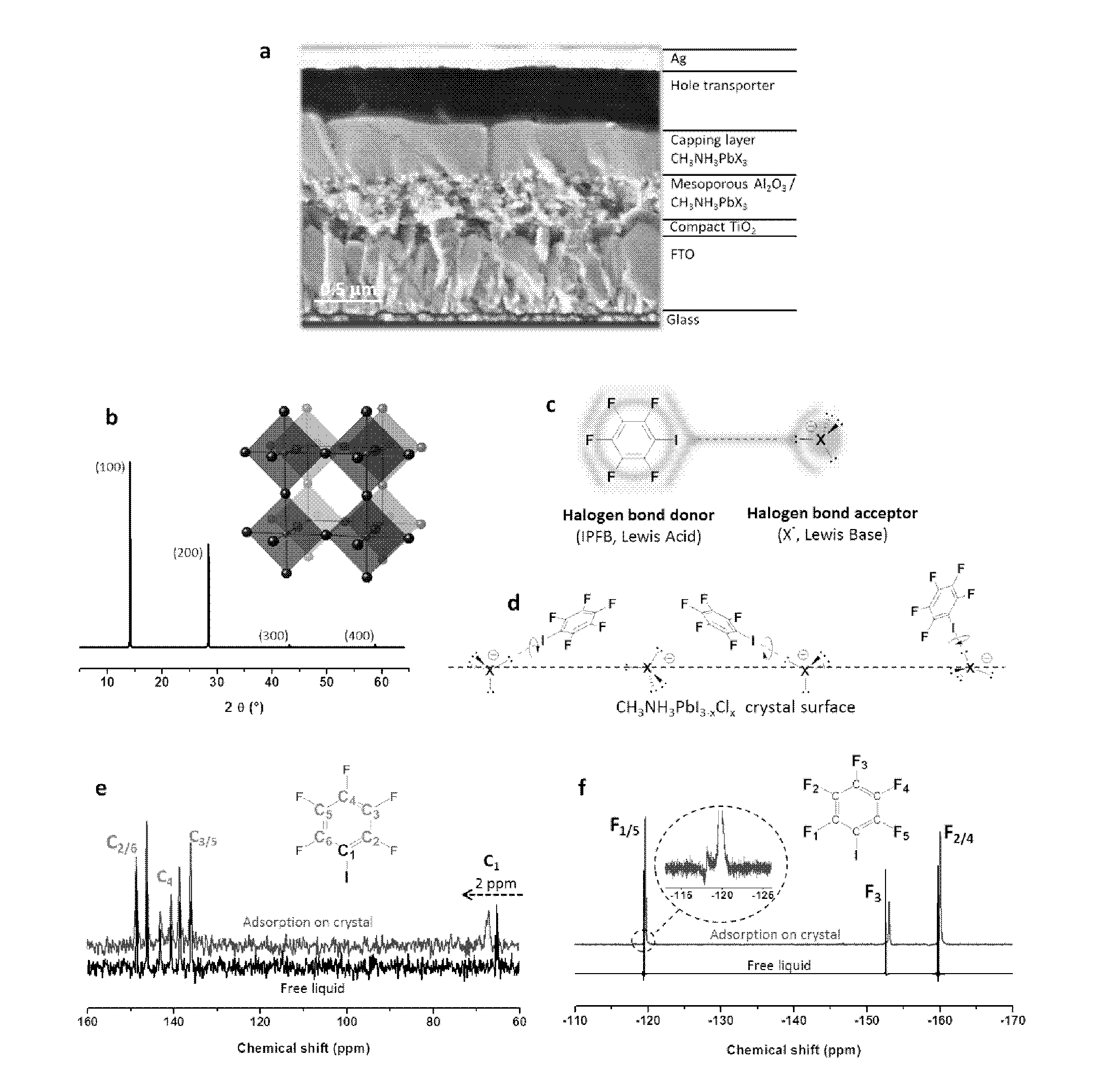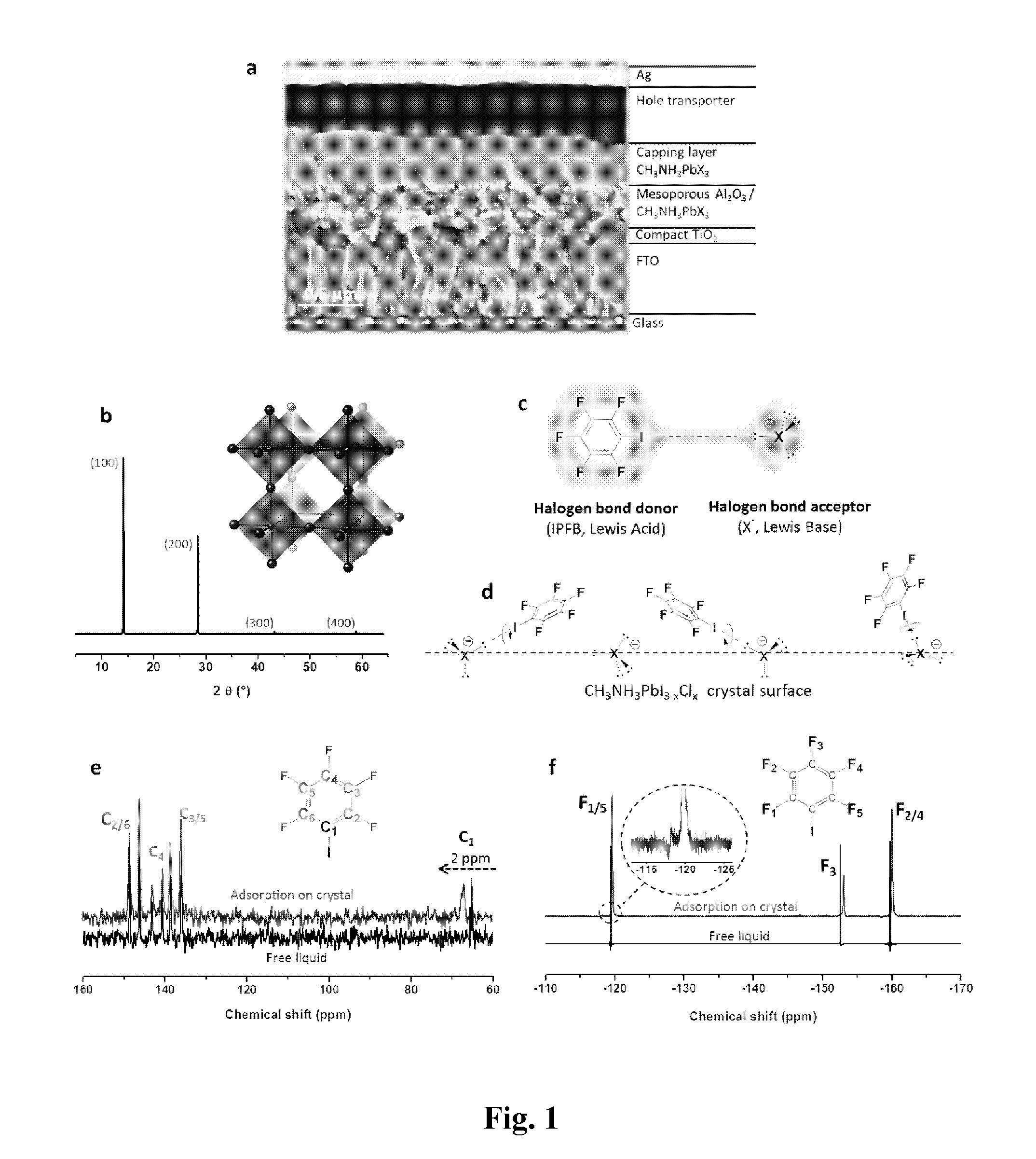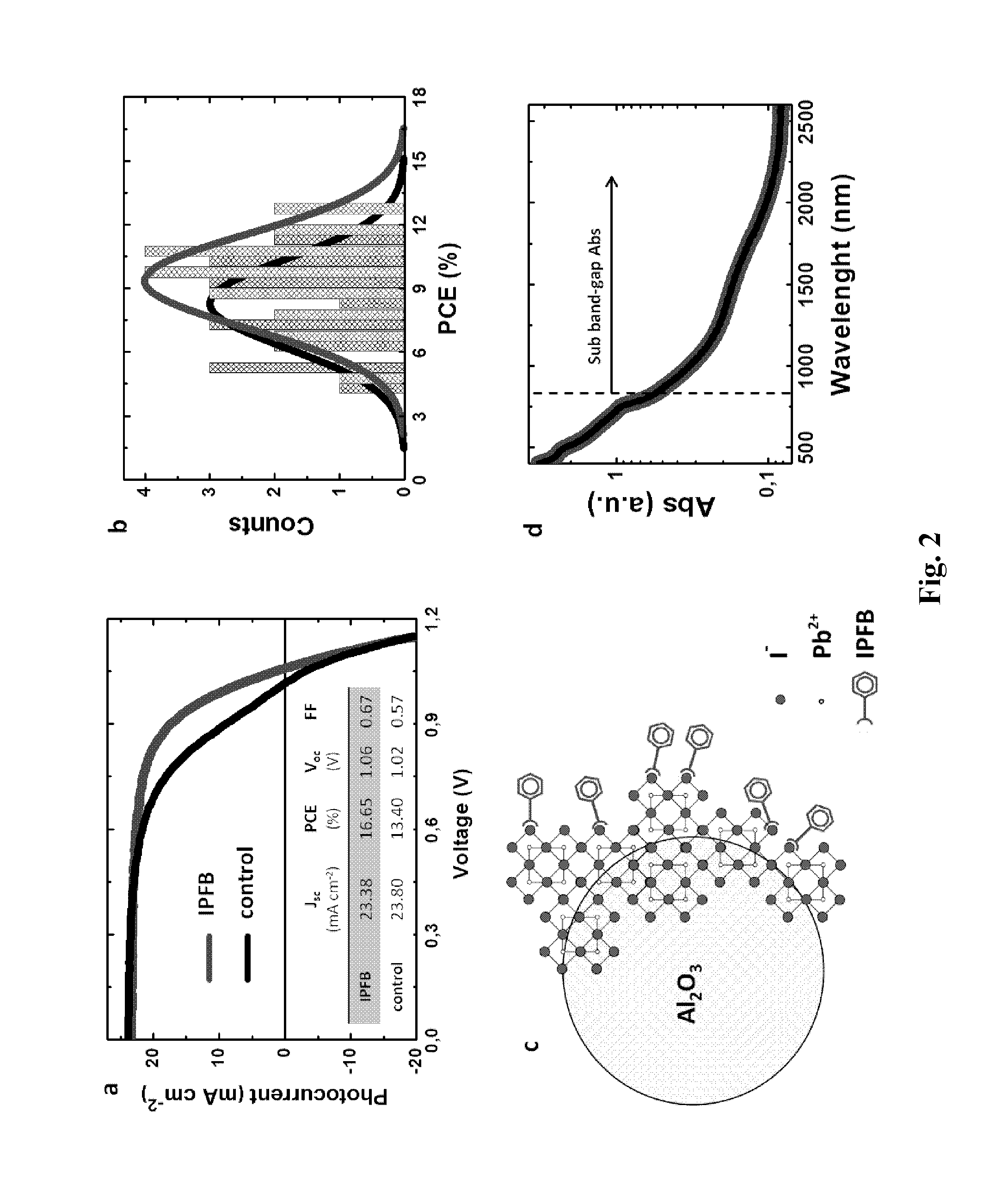Photovoltaic device comprising a metal halide perovskite and a passivating agent
a technology of metal halide perovskite and passivating agent, which is applied in the field of photovoltaic and optoelectronic devices comprising passivated metal halide perovskite, can solve the problems of significant recombination loss under working conditions of perovskite devices, further defect sites within perovskite materials, and large defect density of perovskite materials, so as to improve the stability of perovskite films to ambien
- Summary
- Abstract
- Description
- Claims
- Application Information
AI Technical Summary
Benefits of technology
Problems solved by technology
Method used
Image
Examples
example 1
Adsorption of IPFB and Nature of Interaction
[0339]To demonstrate the presence of adsorbed IPBF (iodopentafluorobenzene) and the nature of the interaction with the CH3NH3PbX3 crystal surface (X=halide), solid state 13C and 19F nuclear magnetic resonance (NMR) measurements were performed. FIG. 1e shows the chemical shift of 13C NMR for pure IPFB, which is liquid at room temperature, and for IPFB adsorbed on the perovskite surface. No significant shift was found for the fluorine-bound carbons (C2-6) in the range 135-150 ppm, while the signal of the iodine-bearing carbon (C1) shifted 2 ppm downfield. Thus, 13C NMR gives strong evidence that IPFB is adsorbed via halogen bonding to the CH3NH3PbX3 crystal surface, as illustrated in FIG. 1d.
[0340]FIG. 1f shows 19F NMR collected on the same samples, which allows the extraction of more detailed information than 13C NMR. The 19F IPBF signals recorded on the treated perovskite films are made of two components (inset FIG. 1f), one small compone...
example 2
Passivation Procedure in Meso-Superstructured Solar Cells (MSSCs) with IPFB
[0341]The devices were prepared on patterned semi-transparent fluorine-doped tin oxide (FTO). A compact layer of 70 nm thick TiO2 was deposited via spray pyrolysis at 275° C. from a precursor solution of titanium diisopropoxide bis(acetylacetonate) diluted with anhydrous ethanol at a volume ratio of 1:10. The substrate was sintered at 500° C. for 45 min and left to cool to room temperature. The samples were then submerged in a 15 mM aqueous TiCl4 bath at 70° C. for 1 h, followed by rinsing with deionized water and re-sintering at 500° C. for 45 min. The next layer of mesoporous Al2O3 was deposited by spin coating a colloidal dispersion of Al2O3 nanoparticles in isopropanol (Sigma-Aldrich) diluted with isopropanol at a volume ratio of 1:2, at 2000 rpm (ramp: 2000 rpm / s) for 60 s, followed by drying at 150° C. for 30 min. The perovskite precursor (40 wt % of methylammonium iodide (CH3NH3I) and lead (II) chlorid...
example 3
Performance and Optical Properties of MSSCs with IPFB
[0343]JV characteristics of the best perovskite MSSCs with and without IPFB treatment (produced by the above described method) are shown in FIG. 2a. Upon IPFB treatment, the short-circuit current density (Jsc) as well as the open-circuit voltage (Voc) remain similar, while the fill factor (FF) is dramatically improved. The table inset in FIG. 2b shows that the overall PCE (power conversion efficiency) increases from 13% to over 16%, representing a step improvement. In FIG. 2b the PCE statistical distribution for a set of devices prepared simultaneously is shown, which confirms the improved trend.
[0344]In FIG. 2a, the control device exhibits a slight bend in the JV curve near 0.9 V, which is responsible for the relatively poor fill factor. Similarly shaped JV curves have previously been reported in several works for both organic and inorganic solar cells, and it is been generally referred to as an “S-shaped” JV curve (Kumar, A. et ...
PUM
 Login to View More
Login to View More Abstract
Description
Claims
Application Information
 Login to View More
Login to View More - R&D
- Intellectual Property
- Life Sciences
- Materials
- Tech Scout
- Unparalleled Data Quality
- Higher Quality Content
- 60% Fewer Hallucinations
Browse by: Latest US Patents, China's latest patents, Technical Efficacy Thesaurus, Application Domain, Technology Topic, Popular Technical Reports.
© 2025 PatSnap. All rights reserved.Legal|Privacy policy|Modern Slavery Act Transparency Statement|Sitemap|About US| Contact US: help@patsnap.com



